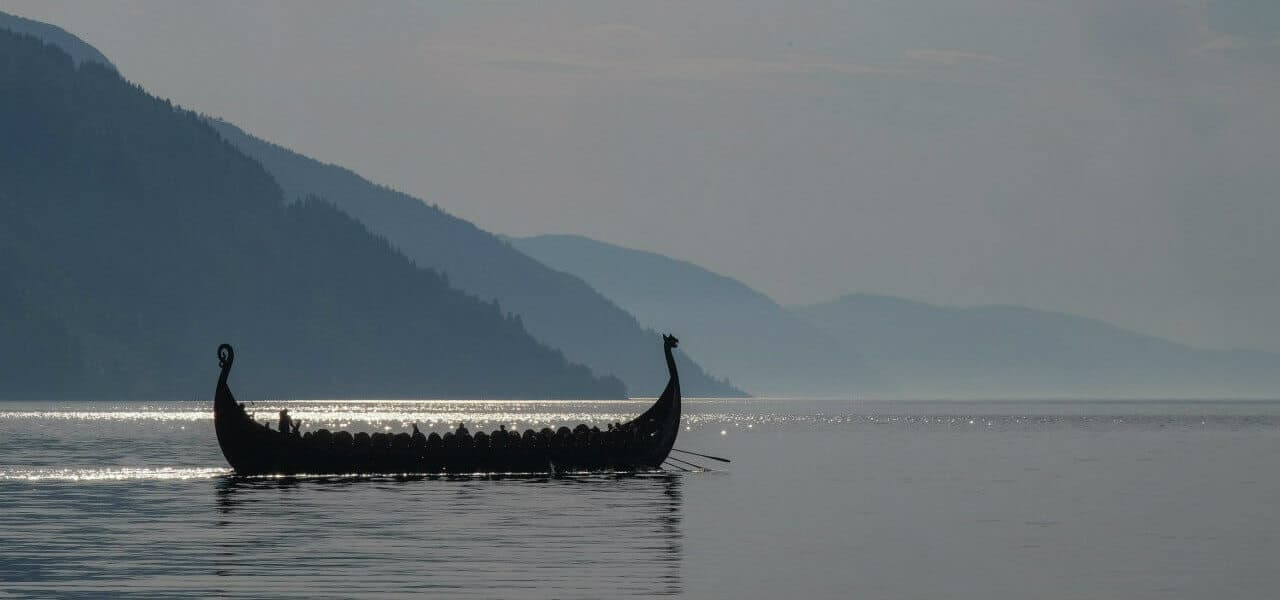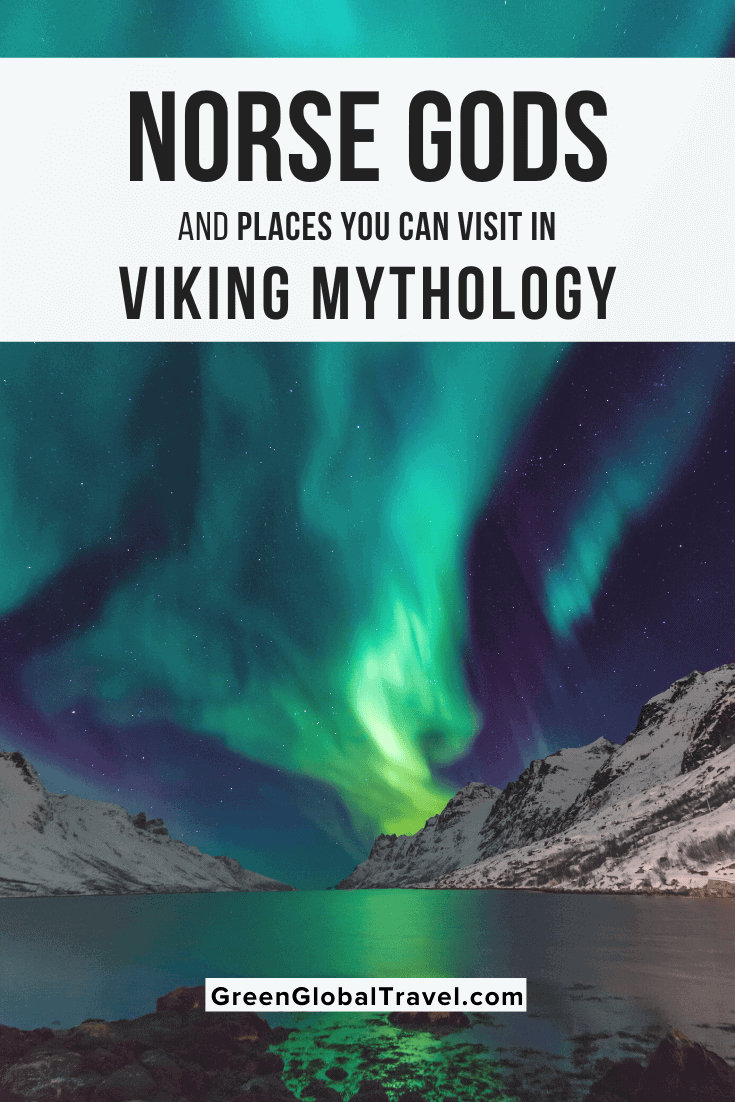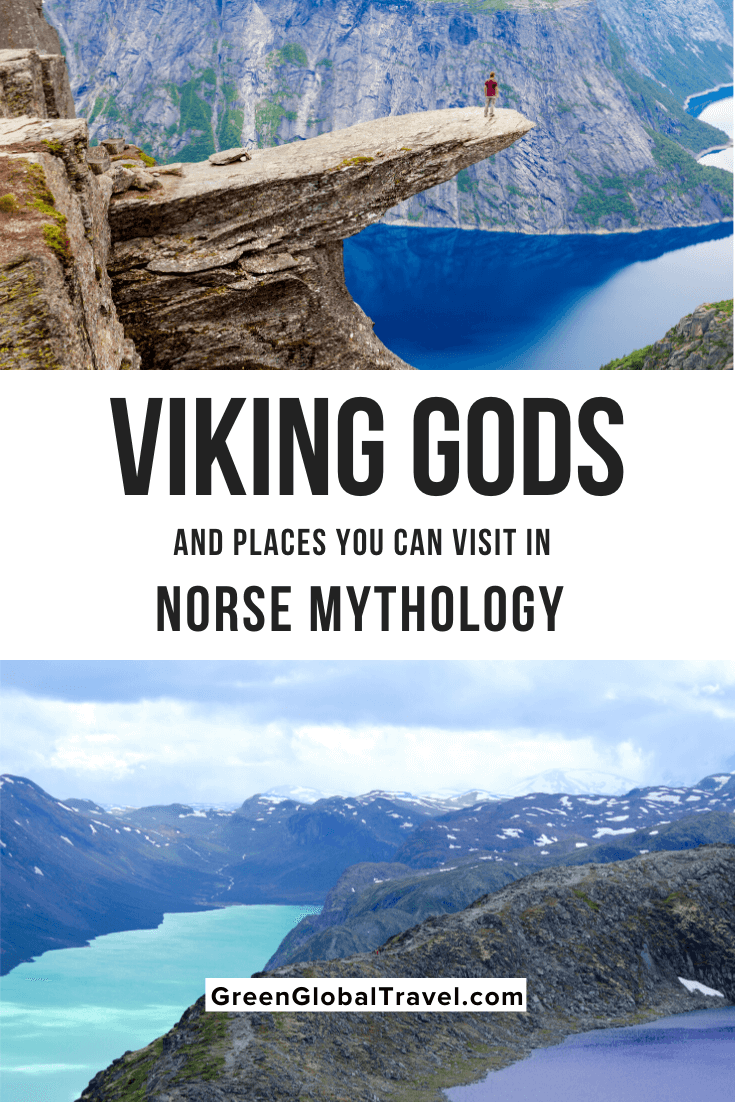There aren’t many archeological relics that remain from the Viking era, and very few recorded documents on Viking mythology due to it being an oral culture.
So ship burial sites, unearthed rune stones, and the Eddas are our best sources for understanding Viking history and the importance of the Norse gods.
The Eddas were two manuscripts that were compiled in the 13th century.
The Prose or Younger Edda, compiled by Icelandic poet/historian Snorri Sturluson, dates to around 1220 CE. The Poetic or Elder Edda was written circa 1270 CE by an unknown author.
Together, these are the main sources of Norse mythology and skaldic poetry, relating much of what we know today about the religion and history of the Scandinavians and Proto-Germanic tribes.
The Vikings originally came from Scandinavia, or what is now known as Sweden, Norway, and Denmark.
But their influence gradually spread as they sought out greener pastures, first in Finland, Greenland, and Iceland (which are also included in the list of Nordic countries), then into western Europe and even Canada.
The Age of Vikings lasted approximately 250 years, and is most famous for the pillaging and plundering done by the much-feared Norsemen.
As early as 725 CE, there were attempts to convert the Vikings to Christianity. At first, the Norse people just viewed Jesus as another god, and the religions existed simultaneously in Scandinavia.
Over time, Christianity became much more widespread.
Many stave churches in Norway feature carvings that mix Norse mythology and Christianity, such as the historic stave church at Urnes.
Here we’ll delve deeper into Viking mythology and the Norse gods, including one who inspired early images of Santa Claus!
READ MORE: A Rare Look Inside 900-year-old Urnes Stave Church
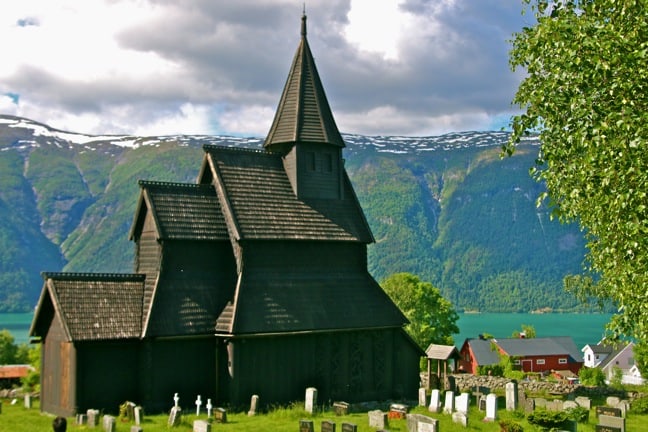
Viking Mythology Basics
In the Norse religion, there are four phases of time.
The first phase is the creation of the world. The second is the beginning of time. The third is the Ragnarök, or the destruction of the worlds. The last is the rise of the new world from the sea.
There are nine different realms in Norse mythology.
These nine realms spread out from the great World Tree, Yggdrasil (whose name translates as “Horse of Odin,” a reference to a myth in which Odin sacrifices himself to gain the wisdom of the runes).
The great tree is at the center of the Norse cosmology, with the nine realms all held together by its branches and roots.
So the fate of the Universe is intrinsically tied to the well-being of Yggdrasil.
The original names of the nine realms are not fully clear today, due to the adaptation by Christian writers such as Snorri Sturluson, who eventually wrote down the Viking mythology for the first time.
READ MORE: Famous Vikings in History that Inspired Vikings Valhalla on Netflix
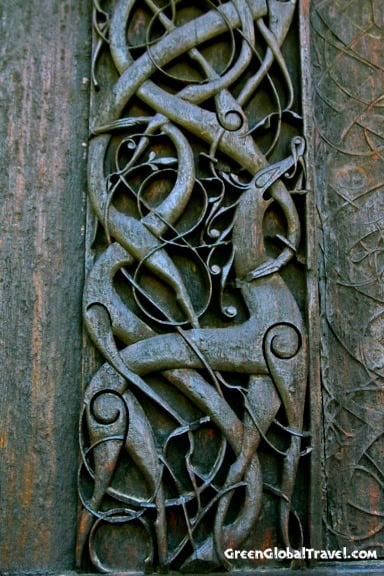
Nine Realms of Norse Mythology
- Asgard- Realm of the Aesir
- Alfheim- Realm of the Bright Elves
- Hel- Realm of the Dead (added by Sturluson)
- Jotunheim- Realm of the Giants
- Midgard- Realm of the Humans
- Muspelheim- Fire-giant/Forces of Chaos
- Nidavellir- Realm of the Dwarves & Svartalfheim, Realm of the Black Elves (Sturluson combined these into the Realm of Dwarves)
- Niflheim- Realm of Ice, Snow & Mist near Muspelheim (added by Sturluson)
- Vanaheim- Realm of the Vanir
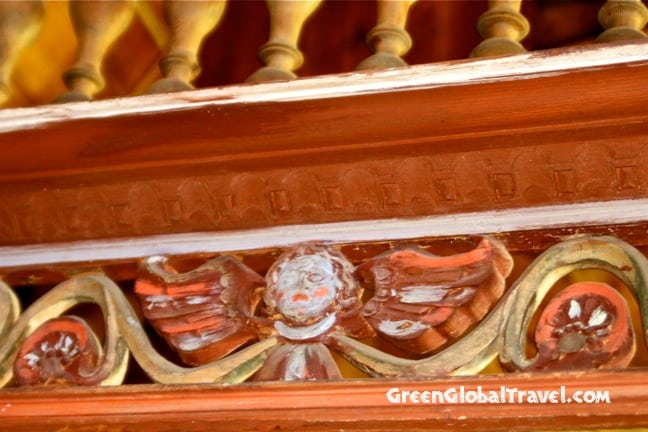
The Ragnarök
Before anything else, there existed the opposing realms of icy Niflheim and fiery Muspelheim, which were separated by the void of Ginnungagap.
Over time, Nilfheim and Muspelheim expanded and met, creating the first giant, Ymir, and the cow, Audhumla.
The cow licked the ice of Nilfheim, revealing Buri (forefather of the gods).
His son, Borr, procreated with Bestla, a giant’s daughter, to create the first Norse gods– Odin, Vili, and Vé. This trio killed Ymir and used his body to create the world.
When humans started to populate that world, time began. In the beginning, everything in that world has its purpose and place and does not conflict.
The World Tree, Yggdrasil, stands in the gods’ home realm of Asgard.
Its roots encompass all the other realms, including Midgard (where humans reside) and Jotunheim (where the giants reside).
Eventually a dragon of death, Nidhogg, chomps on the trees’ roots; the thrashing Jörmungandr (a.k.a. Midgard Serpent) creates violent unrest in the sea before coming ashore; and giants, dwarves, and others rise up and advance towards a war with the gods.
Collectively, these conditions snowball into chaos, and the Ragnarök begins with a terrible winter.
The earth sinks into the sea, the wolf Fenrir breaks loose and devours the sun, the World Tree shakes, and the Bifröst (the pathway between Asgard and Midgard) collapses.
The Viking gods meet to prepare for battle against the Underworld.
Countless gods (including legends such as Odin, Thor, Týr, Freyr, Heimdallr, and Loki) and their foes die, and a giant named Surtr uses his flaming sword to kindle a fire that destroys everything.
In the final phase of the Viking legend, the fire gives birth to new life, which comes from the sea.
A new generation of gods and humans is born. However, in some ancient sources, there is utter destruction, and no one survives the Ragnarök.
READ MORE: The Adventures of Erik the Red & Leif Erikson, the Most Famous Vikings in History
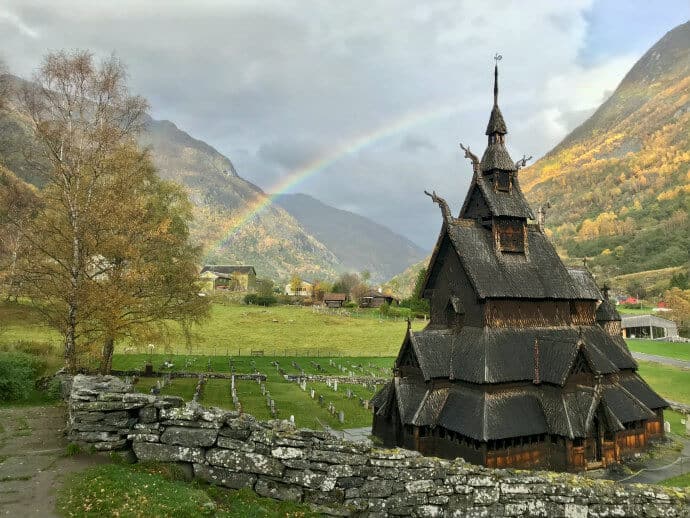
The Major Norse Gods & Goddesses
There are two different tribes of Norse Gods.
The Æesir represent war, government, and chaos. From this line comes Odin and his offspring, which include the gods Thor, Baldr, Víðarr and Váli.
The Vanir, on the other hand, associate with nature and fertility. From this line come gods such as Freyr and Freyja.
READ MORE: Epic Fjords of Norway Road Trip
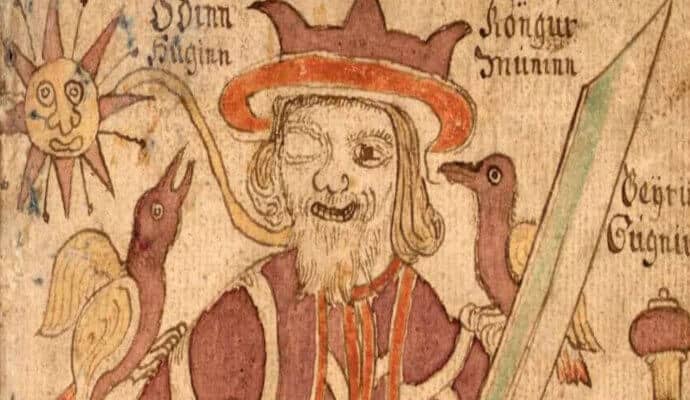
ODIN
Odin is the Norse God of Wisdom, Poetry, and War, and is considered the all-father of the gods.
Modern works and pop culture may portray him as honorable, but in the original Norse mythology he loves the chaos of battle more than wisdom or poetry.
He was also the great magician among the gods, and was often associated with runes. Ancient rune stones can still be found all over Scandinavia today!
There are two prominent Norse legends about Odin. Firstly, in exchange for wisdom, he sacrificed one of his eyes at a magical well.
The other legend is of his magical horse, Sleipnir, which had eight legs and the ability to gallop over the air and sea.
Supposedly Odin and his magical horse were the original inspiration for Santa Claus and his eight magical reindeer!
Also, the day Wednesday comes from Odin, who was also called Woden (Woden’s Day)!
READ MORE: Wardruna’s Ancient Nordic Folk Traditions for Vikings Soundtrack
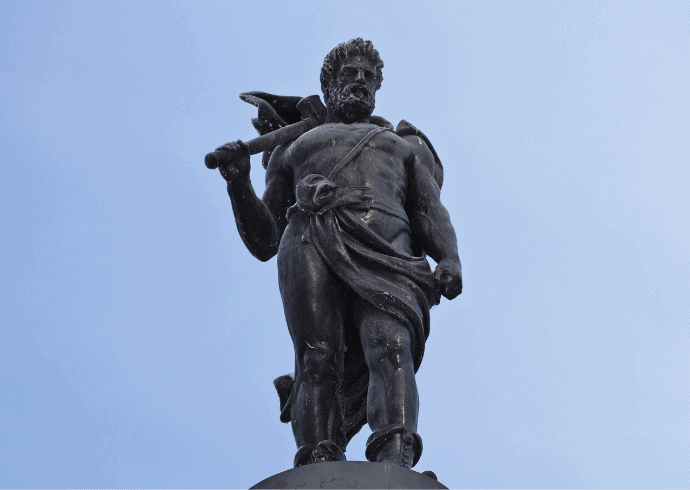
THOR
Odin’s most powerful son, known as the Norse God of Thunder, Thor is physically the strongest of all the Æesir gods.
He is probably the most popular Norse god today, due to the Marvel comic books and Avengers movies.
However, unlike in the movies, Thor is usually depicted with red hair and a full beard.
This beloved Viking god protects both Asgard, the realm of the gods, and Midgard, the realm of the humans, from the giants and other threats.
His famous weapon is Mjölnir, a dwarf-forged hammer that is capable of flattening mountains.
While Odin’s name gave rise to Wednesday, Thor’s gave rise to Thursday.
READ MORE: Hawaiian Mythology (Intro to Hawaiian Gods, Goddesses and Legends)
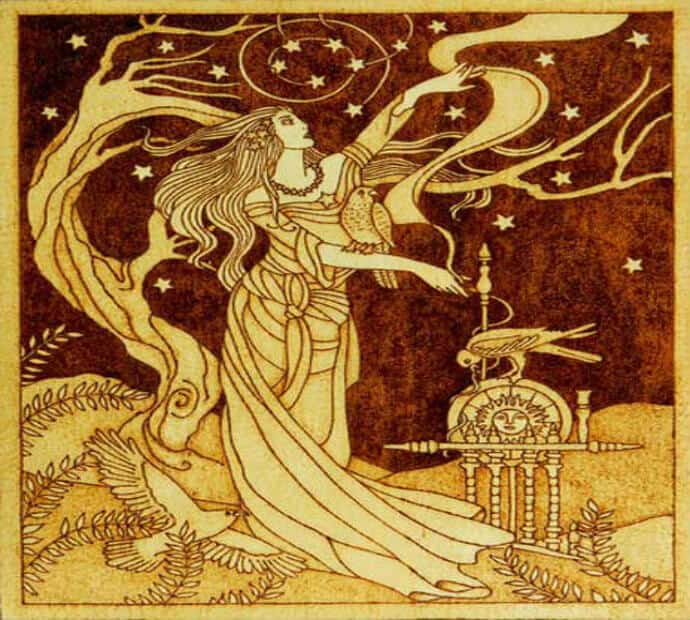
FRIGG
Frigg is the Norse Goddess of Marriage, Family, and Motherhood. She is Odin’s wife, and the only other god to sit on the throne and look out across the nine realms.
These facts make her very similar to Hera of Greek mythology.
Frigg practices a Norse form of magic that allows her to see the fates of the world.
She is also the mother to Baldr and Hodr, who play a significant role in Viking mythology.
One legend says that when Odin went away on long journeys, Freya could be found weeping tears of red gold due to his absence.
Due to the lack of concrete sources, it’s very difficult to distinguish her from the goddess Freyja, and they are sometimes used interchangeably.
Like Odin and Thor, Frigg’s name gave rise to Friday.
READ MORE: Top 5 Norway Eco Attractions
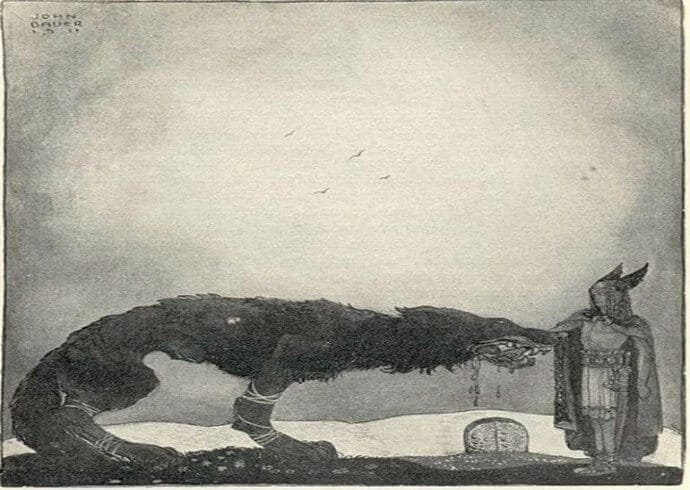
TYR
Týr is the original Norse God of War, and considered the bravest of all the Viking gods.
Ironically, he is also the God of Peace, and has an interest in justice and treaties. Due to this, he usually decides who wins battles.
Since the ancient Norse believed that there was more to war than fighting, Týr’s role as an upholder of the law was just as important as his combat ability.
Although Sturluson’s Eddas did not mention him much, he is known for losing his hand (sometimes recorded as his arm) to the monstrous wolf, Fenrir, the son of Loki.
The story goes that Fenrir would only agree to be chained if one of the gods would put his arm in its mouth.
Týr was the only one willing to do so, showing his bravery and commitment to justice and peacemaking.
Following the trend of other Norse Gods, Týr’s name gave rise to the use of Tuesday.
READ MORE: Winter Adventures in Finnish Lapland
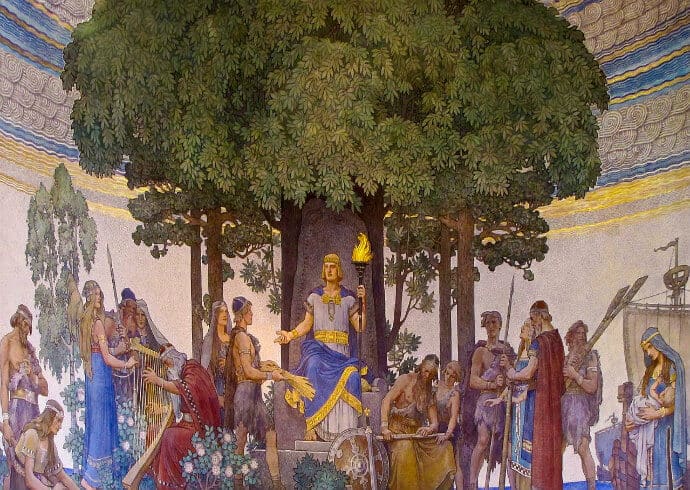
HEIMDALLR
Heimdallr (or Heimdall) is one of the Æsir gods, the guardian of the Bifrost bridge between Asgard and Midgard.
Other names for Heimdall are “the shining god” and “the watchmen of the gods.”
He is a son of Odin, but according to legend he was born from nine different mothers.
He has extraordinary senses, and can see all the way to the ends of the earth.
There is a Norse legend that he could hear grass growing in meadows and wool growing on sheep.
He has a horn, known as the Gjallarhorn, that was used to warn of impending trouble.
It was believed that he would blow his horn as the giants neared Asgard to call the Norse Gods back for the Ragnarök.
His mortal enemy was Loki and, in their final battle during the Ragnarök, they each slayed the other.
READ MORE: Cycling South Koster Island, Sweden
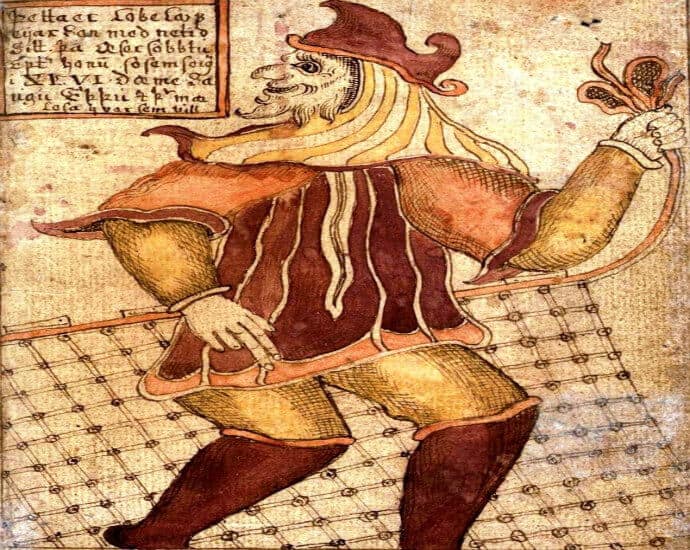
LOKI
Loki is well known in the Marvel Comics as both the adopted brother of Thor and his archnemesis.
However, in Norse mythology, he is the son of a giant and a mysterious woman. He’s also the father of the Goddess Hel, who reigns over the Realm of the Dead.
Loki is the Norse God of Trickery and Mischief. He can change his shape and sex at will.
Most notably, his trickery caused the death of the god Baldr, and his punishment to be tied to a rock and tortured resembles Prometheus in Greek mythology.
Loki is also known as the Father of Monsters. He is the one that sired Fenrir and Jörungandr (the Midgard Serpent), who played roles in the Ragnarök. Loki also sired Odin’s horse, Sleipnir.
Although he sometimes helped the gods trick others, the Æsir did not trust him due to his trickery.
READ MORE: The Top 7 Things to Do in Iceland
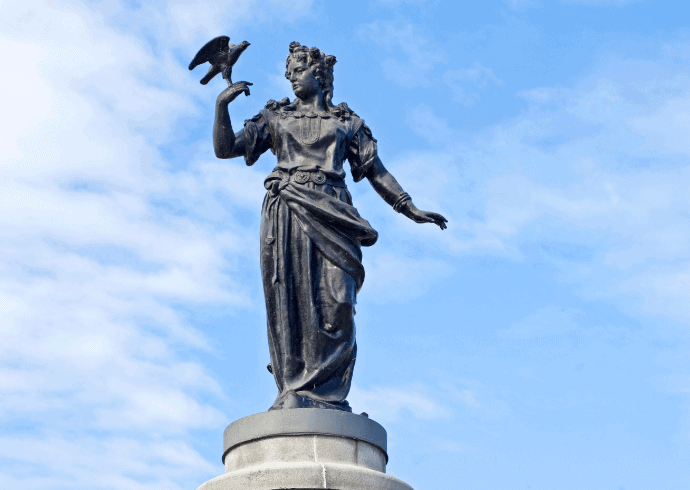
FREYR AND FREYJA
Freyr and Freyja are twins of the Vanir clan of Norse Gods. After the war between the two tribes, the Vanir sent the twins to the Æsir gods.
Freyr rules over the rain and sun, and therefore the fruit of the earth, making him the governor of the prosperity of men. He is also known as the Lord of Elves.
Freyja is the Viking Goddess of Love. She rides a chariot pulled by two cats, and she keeps a wild boar beside her.
She rules over the heavenly afterlife of Folkvangr, where half the warriors go when they die. The other half go to Odin’s Valhalla. As stated earlier, it is likely that Freyja and Frigg are the same goddess.
READ MORE: 10 Things Wikipedia Won’t Tell You about Easter Origins
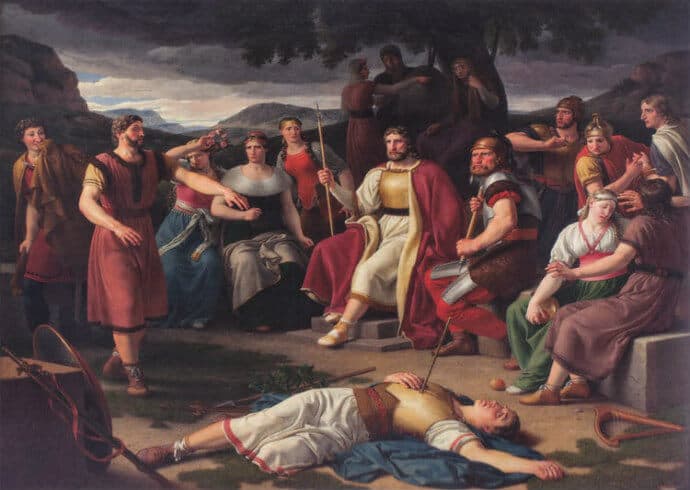
BALDR
Baldr is the son of Odin and Frigg, and the brother of Hoδr.
As the God of Light and Radiance, he is the epitome of radiance, beauty, kindness, and fairness. He lived between heaven and earth.
Everyone believed him to be immortal, because all things swore to Frigg not to harm him. But the mistletoe did not swear.
Loki, the God of Trickery, discovered this and convinced Balder’s brother, Hodr, to throw a spear of mistletoe at him.
After the Ragnarök, the Realm of Death opens and Baldr and Hoor both escape to take Odin’s place as rulers.
READ MORE: 20 Symbols of Christmas: The History & Meaning
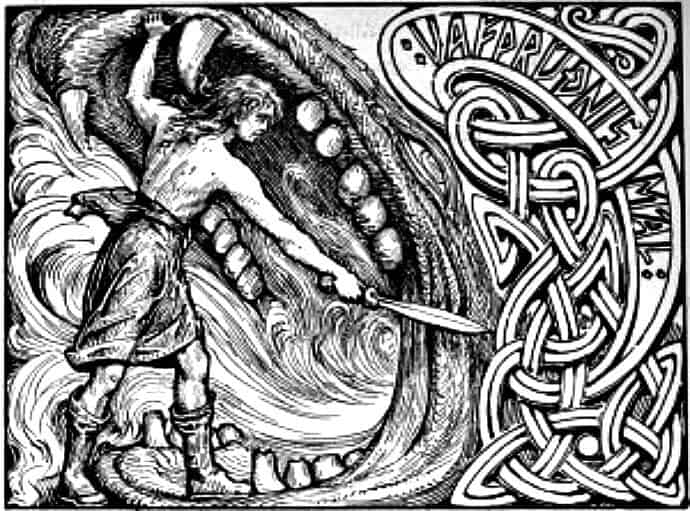
VIDAR
Vidar is a son of Odin and the giantess Grid.
Although he is the second strongest of the Æsir gods after Thor, he is a peaceful god who likes to sit in silence.
He crafts a special shoe that helps him to kill the wolf Fenrir in the Ragnarök, which he does to avenge his father’s death.
He is one of the original Norse Gods who survives the Ragnarök and helps create the world after.
READ MORE: The Moose Whisperer & the Coolest Moose in Sweden
Norse Mythology Legends & Places in Norway
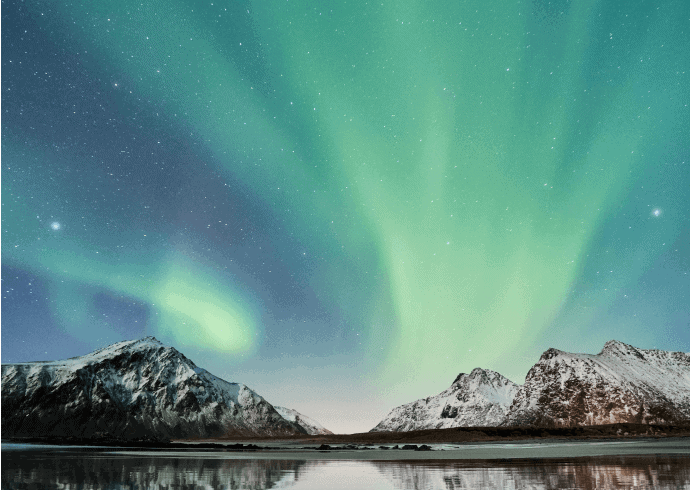
NORTHERN LIGHTS
Without getting into advanced physics, the Northern Lights, or auroras, occur when solar particles interact with the Earth’s magnetic shield and atmosphere.
You can often see the Northern Lights in Northern Norway, from the Lofoten Islands to Tromsø, especially in late autumn and winter/early spring.
During the Viking Age, the Norse believed these magical lights to be the armor of the Valkyrie warrior virgins, who decided those that died in battle and which ones made it to Valhalla.
The Valkyries were a group of maidens who served Odin. They rode to battlefields in armor on horses, which, in some legends, could fly over the sky and sea. People often associate them with fairness, brightness, gold, and bloodshed.
Others claimed that the Northern Lights represented the mythical Bifröst bridge, which connected the realms of men and the gods.
READ MORE: The 25 Best Places to Spend Christmas in Europe
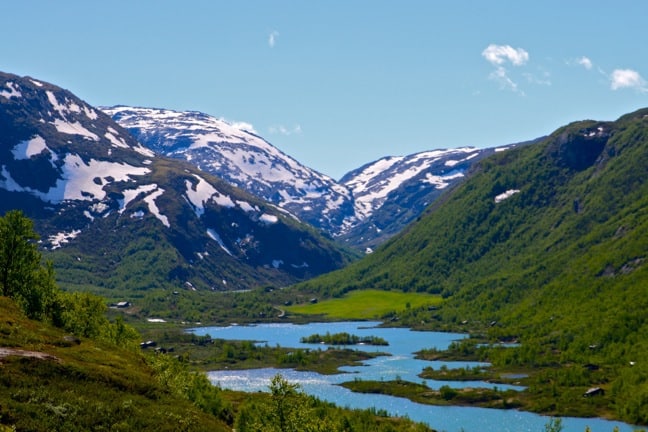
JOTUNHEIMEN NATIONAL PARK
In Southeast Norway, you can find another incredible place that directly connects with Norse myth.
Jotunheimen National Park contains some of Northern Europe’s highest mountains. It is packed with huge waterfalls, lakes, glaciers, and valleys that look like something straight out of a fantasy world.
From ferries and hiking to scenic drives, there are many ways to explore this gigantic park, and to revel in its larger-than-life beauty.
Of the nine realms, Jotunheim was the Realm of the Giants. In Viking myth, Midgard is earth, while Jotunheim is on a different plane. So the ancient Norsemen essentially believed that this place was truly “out of this world.”
However, poet Aasmund Olavsson Vinje and other Norwegians view the towering mountains and magical sights as the symbolic home of the Jotnene (a.k.a. the land of the giants).
READ MORE: Driving Norway’s Jotunheimen Mountains

TROLL’S ROAD & TROLL’S TONGUE (TROLLTUNGA)
Trolls in Norse myth are classified as mischievous creatures. They are very similar to giants, and it is unclear whether or not they are the same.
There are two types of trolls. Trolls of the mountain and forests are depicted as large and dumb creatures who use nature as a sort of playground.
Trolls of the underground caves, on the other hand, are smaller and use nature to deceive humans.
There are many Viking legends about trolls, mostly centering around how to outwit them. Certain myths claimed that church bells repel trolls (since they are not Christian) as well as lightning (because Thor used to hunt trolls).
Other legends say that trolls turn to stone in the sunlight, and that this is the cause of certain rock formations in Norway.
Trollstigen (a.k.a. the Troll’s Road) in East Norway climbs gradually up a steep mountainside and offers stunning views of mountains, valleys, and waterfalls. Along the route, you’ll see many cartoonish statues of trolls and troll souvenirs that try to bring these ancient myths to life.
Another natural place named after the mythic trolls in Norway is Trolltunga (a.k.a. Troll’s Tongue), which is located outside of Hardangerfjord National Park.
Although the hike to Trolltunga is daunting, those who dare to take the trek will see breathtaking sights. This unique rock formation hangs 700 meters above Lake Ringedalsvatnet, and is an increasingly popular selfie spot.
READ MORE: Climbing Nigardsbreen Glacier, Norway- A He Said/She Said Story
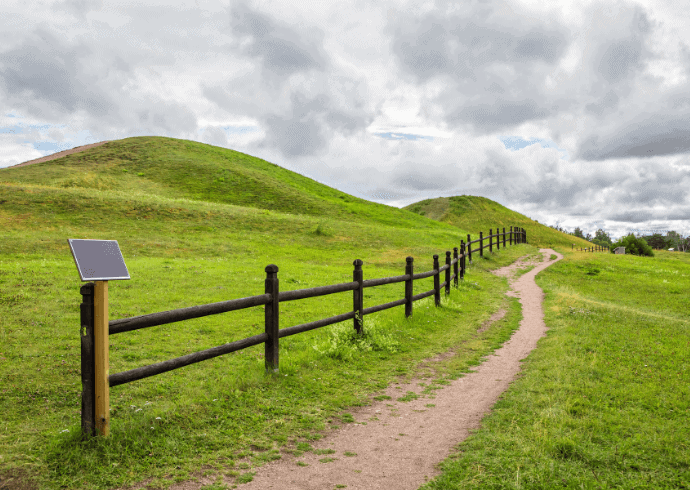
GAMLA UPPSALA
A more historical location to view Norse mythology is Gamla Uppsala, a village outside the city of Uppsala in Sweden.
This is a popular Viking pilgrimage sight, known for three large burial mounds that date back to the 5th and 6th centuries.
Visitors can walk around the royal burial sites, see the ruins of Uppsala’s first cathedral, and visit the Uppsala church and museum.
You can also learn about the mysterious golden temple, which was a place of Norse/Christian worship that had a golden chain surrounding it.
In Norse mythology, the three burial mounds represent Thor, Odin, and Freyr. Others believed them to be burial sites of legendary kings, while some just thought they were simple mounds of dirt. –by Sonny Grace Bray; featured image by Steinar Engeland via Unsplash CC-O
